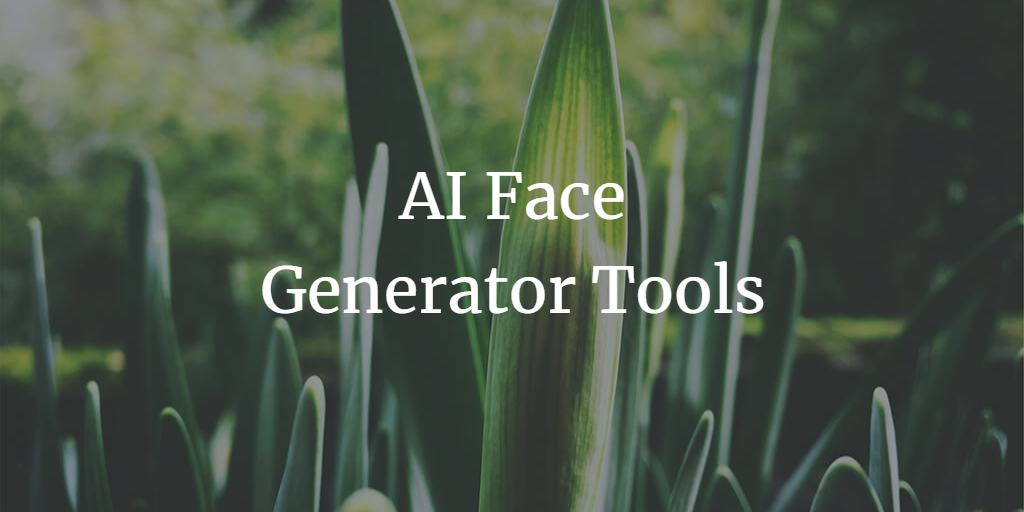Top 3 AI Face Generator Tools for Crafting Realistic Human Faces in 2023

Table of Contents
Introduction
What Are AI Face Generators?
The Benefits and Uses of AI Face Generators
3 Amazing AI Face Generator Tools
StyleGAN2
Artbreeder
Generated.Photos
The Future of AI Face Generators
Deep Dive into AI Face Generator Technology
Understanding GANs
Building Upon GANs
Ethical Considerations
The Road Ahead
Conclusion
Introduction
In the world of artificial intelligence, one of the most awe-inspiring advances has been in the realm of AI face generation. These sophisticated algorithms, often powered by Generative Adversarial Networks (GANs), are capable of creating incredibly realistic human faces from scratch. This blog post dives into the world of AI face generators, examining their benefits and uses, and exploring three of the most incredible tools currently on the market.
What Are AI Face Generators?
AI face generators are tools powered by machine learning algorithms that can create hyper-realistic images of human faces. These faces, while completely synthetic, are nearly indistinguishable from those of real individuals.
The Benefits and Uses of AI Face Generators
AI face generators have numerous applications, from entertainment to business and beyond. Here are a few key benefits and uses:
Content Creation and Graphic Design: For artists, designers, and content creators, AI face generators can provide an endless source of unique faces for character design, advertising campaigns, or digital art.
Gaming and Virtual Reality: In gaming and virtual reality, these tools can be used to create diverse and realistic characters, enhancing the overall user experience.
Privacy and Security: AI-generated faces can be used in place of real faces to protect individual privacy in public domain datasets or online.
Research and Development: In the field of AI research, face generator tools serve as a way to improve and test algorithms, contributing to the advancement of machine learning techniques.
3 Amazing AI Face Generator Tools
While there are numerous AI face generators available, the following three stand out for their accuracy, versatility, and ease of use.
Tool 1: StyleGAN2
Developed by Nvidia, StyleGAN2 is an improved version of the original StyleGAN, a state-of-the-art face generator. StyleGAN2 addresses several issues found in its predecessor and can generate highly realistic and high-resolution human faces.
This tool is open-source, meaning anyone with the right technical skills can utilize StyleGAN2 to create their own AI-generated faces. In addition, the research and techniques developed in the creation of StyleGAN2 have significantly contributed to the field of AI and machine learning.
Tool 2: Artbreeder
Artbreeder is an online platform that uses GANs to produce AI-generated faces. One unique aspect of Artbreeder is the ability for users to blend images together, creating amalgamations that are still remarkably realistic. The platform is easy to use and doesn’t require any coding knowledge, making it accessible to artists and creators of all kinds.
Artbreeder also has options to create landscapes, animals, and other types of images, demonstrating the impressive versatility of GAN technology.
Tool 3: Generated.Photos
Generated.Photos offers a collection of over two million AI-generated faces that are free for commercial use. Their face generator tool, powered by advanced machine learning algorithms, provides users with diverse and high-quality faces.
One key benefit of Generated.Photos is the ability to filter generated faces by specific attributes, such as age, gender, and emotion. This feature is especially beneficial for projects that require a certain type of face or expression.
The Future of AI Face Generators
AI face generation is an area of active research and development. The capabilities of these tools are rapidly advancing, with new techniques and models regularly being introduced. In the future, we can expect AI face generators to produce even more realistic and diverse images.
While the technology is exciting, it's also important to consider the ethical implications. Misuse of AI-generated faces can lead to issues such as deepfakes or identity theft. As the technology progresses, it's crucial that researchers, policymakers, and users consider these potential challenges and work towards responsible use of AI face generation.
Deep Dive into AI Face Generator Technology
Artificial intelligence has made significant strides in recent years, and AI face generation is a prime example of this advancement. To create realistic faces, AI face generator tools often rely on a type of machine learning model known as a Generative Adversarial Network (GAN).
Understanding GANs
In 2014, Ian Goodfellow and his colleagues pioneered the introduction of GANs (Generative Adversarial Networks).. This type of network involves two separate models: a generator and a discriminator. The generator generates fresh data instances, while the discriminator assesses their authenticity. The discriminator is also given real data to train on and needs to identify whether each instance of data it reviews is from the generator or from this real dataset.
This process can be likened to a forger trying to create a counterfeit painting (the generator) and an art detective trying to determine whether a painting is real or fake (the discriminator). The generator learns to produce more accurate faces to fool the discriminator, and the discriminator learns to get better at distinguishing real faces from the generated ones. As the two models train together, both improve—resulting in highly realistic AI-generated faces.
Building Upon GANs
While GANs serve as the foundational technology for AI face generators, specific tools often introduce their unique algorithms and techniques. For example, StyleGAN2, an algorithm developed by Nvidia, introduced concepts like style mixing and noise blending to enhance the quality and diversity of the generated faces.
Similarly, other tools and platforms incorporate additional features to cater to specific user needs. Artbreeder, for instance, allows users to blend different faces, while Generated.Photos offers a vast library of faces filterable by various attributes.
Ethical Considerations
As with many advanced technologies, AI face generators are not without ethical implications. They have the potential to be misused, with consequences ranging from the trivial to the severe. Outlined below are several significant ethical considerations:
Deepfakes: This is perhaps the most widely discussed ethical issue related to AI face generators. Deepfakes involve using AI to create hyper-realistic videos of people, often public figures, saying or doing things they never did. The potential for misinformation and manipulation is substantial, and societies are still grappling with how to deal with this emerging threat.
Privacy and Consent: When an AI generates a face that is indistinguishable from a real person's face, questions of privacy and consent arise. For instance, what if the generated face resembles a real person without their consent? Is it ethical to use these faces in media or advertisements without any sort of permission or compensation?
Biases in AI: Like all machine learning models, AI face generators can only learn from the data they're trained on. If the training data lacks diversity, the generated faces will also lack diversity. Biases in AI is a significant concern in the tech industry and one that developers must strive to mitigate.
The Road Ahead
Despite the ethical challenges, the potential applications of AI face generators are enormous. In the future, they could revolutionize industries like gaming, film, advertising, and even fields like cybersecurity and psychology.
For instance, game developers could use AI-generated faces to create a diverse cast of characters without requiring extensive design work. Filmmakers could use these tools to generate extras or even lead characters in animated films. In advertising, AI-generated faces could offer diverse representations without the need for models or photoshoots.
In the realm of cybersecurity, AI-generated faces could be used to train facial recognition systems, thereby enhancing their accuracy. And in psychology, researchers could use AI faces to study human perceptions of identity, beauty, emotion, and more.
In conclusion, while the field of AI face generators is still relatively new, its growth is accelerating, and its potential is enormous. As we continue to explore this fascinating technology, it's crucial to navigate the ethical implications with care and responsibility. With the right approach, AI face generators can serve as a powerful tool for innovation, creativity, and progress.
Conclusion
AI face generators are powerful tools that have transformed the way we create and perceive digital imagery. With their ability to create hyper-realistic and unique human faces, these tools open up new avenues for creativity and innovation.
From StyleGAN2's complex, high-resolution images to Artbreeder's user-friendly, blendable creations, and Generated.Photos' vast, filterable library, these tools showcase the incredible potential of AI in the realm of digital art and design.
As we move forward into an increasingly digital future, AI face generators will undoubtedly continue to play a significant role. They represent not just the remarkable capabilities of machine learning and AI but also the limitless potential of human creativity when paired with these technologies.


